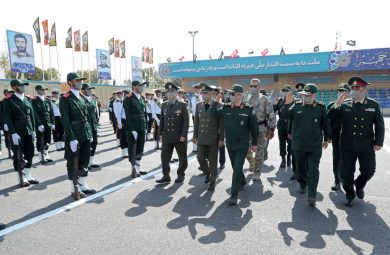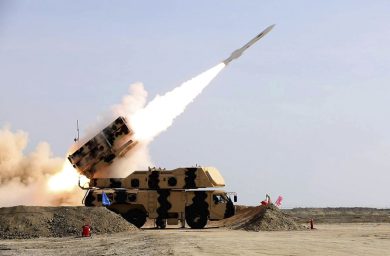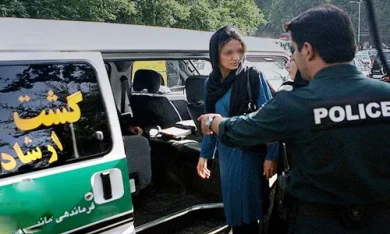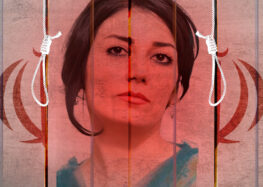In Iran, the fight for freedom, justice, and human dignity has a woman’s face. For decades, women in Iran have been on the frontlines of protests, organizing movements, speaking out against injustice, and demanding their rights in the face of an oppressive regime. But while many stories of Iranian women’s resistance have reached international headlines, the stories of those who are behind bars—political prisoners incarcerated for their peaceful activism—remain largely untold.
These women are not criminals. They are lawyers, journalists, students, teachers, artists, and mothers. Their crime? Daring to speak out. Demanding equality. Removing a headscarf. Exposing corruption. Defending human rights. The Islamic Republic, through its powerful and unaccountable arm—the Islamic Revolutionary Guard Corps (IRGC)—has made it a mission to silence them.
This analysis explores the systemic targeting of women in Iran, the conditions of their imprisonment, the role of the IRGC in their arrests and abuse, and why their stories are critical to understanding both the oppression inside Iran and the potential for change.
1. The Role of the IRGC in Silencing Dissent
The IRGC, initially created to defend the revolution, has evolved into the regime’s most powerful security, intelligence, and economic force. It plays a direct role in:
• Monitoring activists, journalists, and civil society members
• Conducting politically motivated arrests
• Running interrogation centers and prisons, including Evin and Qarchak
• Intimidating families of prisoners and suppressing public support
Women who challenge Iran’s repressive gender laws or speak out against the regime are frequently targeted by IRGC intelligence forces. Often arrested without warrants, they are taken to undisclosed locations, subjected to psychological torture, forced confessions, and extended solitary confinement.
2. Who Are These Women? Profiles in Courage
Narges Mohammadi
A Nobel Peace Prize laureate in 2023, Mohammadi has spent over a decade in prison for her advocacy against the death penalty and her work with human rights groups. Her time in prison includes:
• Long periods in solitary confinement
• Being denied access to medical treatment
• Publishing letters and statements exposing abuse of fellow prisoners
Despite these hardships, she remains a prominent voice for women’s rights and political freedom in Iran.
Nasrin Sotoudeh
A human rights lawyer, Sotoudeh has represented women arrested for removing their headscarves and activists facing trumped-up charges. She has:
• Been sentenced to over 38 years in prison and 148 lashes
• Carried out multiple hunger strikes
• Publicly denounced forced hijab laws and unjust judicial processes
Her resilience continues to inspire global solidarity campaigns.
Sepideh Gholian
A young journalist and labor rights activist, Gholian has been imprisoned multiple times for covering protests and refusing to remain silent. Her bravery was on display when, upon a brief release from prison, she defiantly chanted anti-regime slogans outside Evin Prison—only to be arrested again within hours.
Atena Daemi
A children’s rights activist, Daemi has spent years in prison on vague charges such as “propaganda against the state.” She has been subject to:
• Severe interrogations
• Denial of basic healthcare
• Harassment even after her release
3. Inside the Prisons: Torture, Abuse, and Fear
Evin Prison (Tehran)
Iran’s most infamous political prison, controlled in large part by the IRGC, has become a symbol of repression. Female prisoners report:
• Constant surveillance
• Denial of visits, phone calls, or legal representation
• Threats against their children and families
• Use of prolonged solitary confinement as torture
Qarchak Prison (Varamin)
Often described as the worst prison for women in Iran, Qarchak is overcrowded, unsanitary, and dangerous.
Political prisoners are held alongside violent criminals. Conditions include:
• No access to clean water or medical care
• Verbal and physical abuse by guards
• Intentional mixing of vulnerable political prisoners with dangerous inmates
4. Methods of Psychological Warfare
The IRGC’s tactics are not only physical but deeply psychological. Their aim is to break the spirit of female activists and deter others from following their path. Techniques include:
• Forced confessions aired on state TV
• Shaming and slander in government-controlled media
• Sexual harassment and threats of rape
• Use of family pressure (threatening to imprison siblings or children)
• Post-prison surveillance and continued harassment
5. Women and the Protest Movements
Women’s imprisonment often increases during periods of heightened political unrest. For example:
• 2019 Protests: Dozens of women were arrested for their role in organizing demonstrations against rising fuel prices and economic hardship.
• 2022 Mahsa Amini Protests: Sparked by the death of a young woman in morality police custody, these protests saw hundreds of women detained, with many subjected to beatings, sexual assault, and disappearances.
Despite the risk, women continue to be the driving force of Iran’s protest movements. Their courage in the streets leads many directly to the prison system—but it has also led to a global awakening.
6. Why Their Stories Matter
The stories of these women matter not only because they expose the brutality of the Iranian regime but because they:
• Reflect the power and potential of Iran’s civil society
• Inspire global feminist and human rights movements
• Demand accountability from international institutions
• Help build a future vision of Iran grounded in freedom, justice, and gender equality
Moreover, these women often continue their activism from behind bars—writing letters, organizing protests, and smuggling out messages to the world.
7. Global Responses and the Path Forward
A. International Pressure
Governments, NGOs, and human rights groups must continue to:
• Sanction IRGC commanders and judges responsible for rights abuses
• Call for the release of all political prisoners, especially women
• Offer asylum and protection for exiled activists
• Support independent media and digital platforms that amplify their voices
B. Role of the Iranian Diaspora
The Iranian diaspora plays a critical role by:
• Keeping international attention on imprisoned women
• Organizing global protests
• Lobbying governments and parliaments to take action
• Providing safe spaces and financial support for the families of detainees
C. Solidarity Movements
Campaigns like #FreeIranianWomen, #WomenLifeFreedom, and #BanIRGC have brought the issue into the global spotlight. Continued pressure is essential to ensure that the stories of women political prisoners are not forgotten.
Conclusion
Iranian women behind bars are not victims—they are heroes. They represent the conscience of a nation and the beating heart of a movement for justice and freedom. Their imprisonment is a stain on the international human rights record, but their resistance is a source of hope.
Their stories must be told. Their names must be remembered. Their courage must be honored.
Because in every prison cell holding an Iranian woman, there lives the spirit of a free Iran yet to come.
Join Our Newsletter!
Stay informed with the latest updates, news, and ways to take action in the fight for justice and global security. Sign up now to get updates delivered straight to your inbox!





